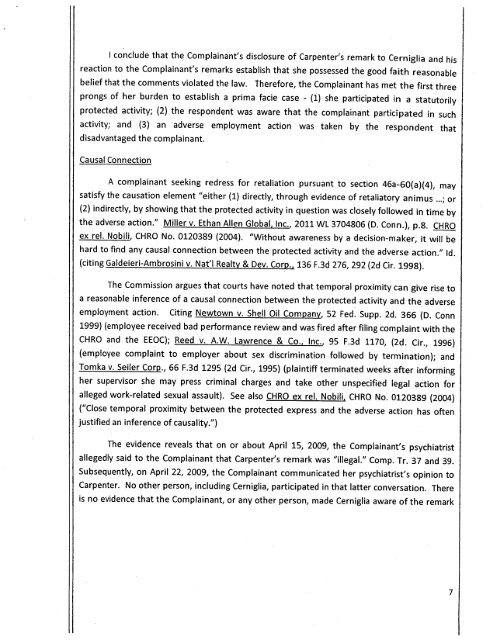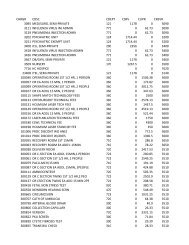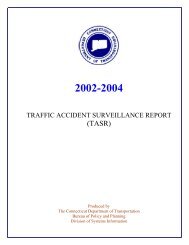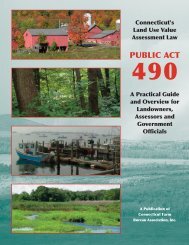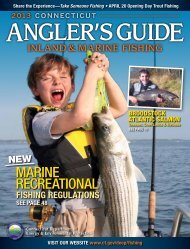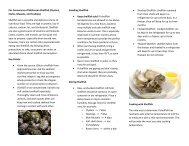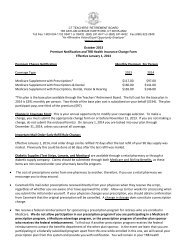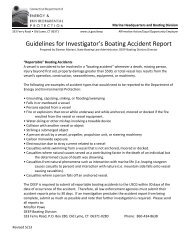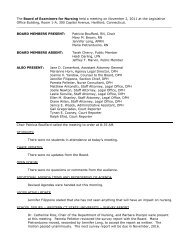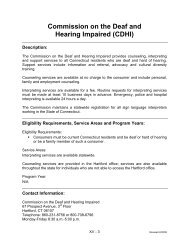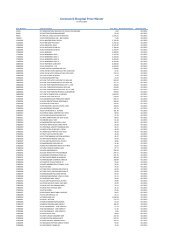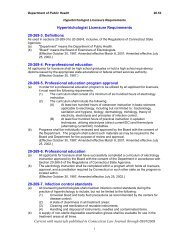STATE OF CONNECTICUT OFFICE OF PUBLIC HEARINGS - CT.gov
STATE OF CONNECTICUT OFFICE OF PUBLIC HEARINGS - CT.gov
STATE OF CONNECTICUT OFFICE OF PUBLIC HEARINGS - CT.gov
Create successful ePaper yourself
Turn your PDF publications into a flip-book with our unique Google optimized e-Paper software.
I conclude that the Complainant's disclosure of Carpenter's remark to Cerniglia and his<br />
reaction to the Complainant's remarks establish that she possessed the good faith reasonable<br />
belief that the comments violated the law. Therefore, the Complainant has met the first three<br />
prongs of her burden to establish a prima facie case - (1) she participated in a statutorily<br />
protected activity; (2) the respondent was aware that the complainant participated in such<br />
activity; and (3) an adverse employment action was taken by the respondent that<br />
disadvantaged the complainant.<br />
Causal Connection<br />
A complainant seeking redress for retaliation pursuant to section 46a-60(a)(4)/ may<br />
satisfy the causation element "either (1) directly, through evidence of retaliatory animus ...; or<br />
(2) indirectly, by showing that the protected activity in question was closely followed in time by<br />
the adverse action." Miller v. Ethan Allen Global. Inc.. 2011 WL 3704806 (D. Conn.), p.8. CHRP<br />
ex rel. Nobili. CHRO No. 0120389 (2004). "Without awareness by a decision-maker, it will be<br />
hard to find any causal connection between the protected activity and the adverse action." Id.<br />
(citing Galdeieri-Ambrosini v. Nat'l Realty & Dev. Corp.. 136 F.3d 276, 292 (2d Cir. 1998).<br />
The Commission argues that courts have noted that temporal proximity can give rise to<br />
a reasonable inference of a causal connection between the protected activity and the adverse<br />
employment action. Citing Newtown v. Shell Oil Company, 52 Fed. Supp. 2d. 366 (D. Conn<br />
1999) (employee received bad performance review and was fired after filing complaint with the<br />
CHRO and the EEOC); Reed v. A.W. Lawrence & Co.. Inc.. 95 F.3d 1170, (2d. Cir., 1996)<br />
(employee complaint to employer about sex discrimination followed by termination); and<br />
Tomka v. Seiler Corp., 66 F.3d 1295 (2d Cir., 1995) (plaintiff terminated weeks after informing<br />
her supervisor she may press criminal charges and take other unspecified legal action for<br />
alleged work-related sexual assault). See also CHRO ex rel. Nobili. CHRO No. 0120389 (2004)<br />
("Close temporal proximity between the protected express and the adverse action has often<br />
justified an inference of causality.")<br />
The evidence reveals that on or about April 15, 2009, the Complainant's psychiatrist<br />
allegedly said to the Complainant that Carpenter's remark was "illegal." Comp. Tr. 37 and 39.<br />
Subsequently, on April 22, 2009, the Complainant communicated her psychiatrist's opinion to<br />
Carpenter. No other person, including Cerniglia, participated in that latter conversation. There<br />
is no evidence that the Complainant, or any other person, made Cerniglia aware of the remark


